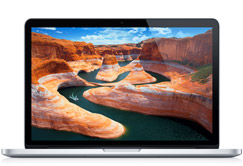
Its price tag of $999 for the 128 GB base model is quite hefty, and the extra $200 that Apple charges for a 256 GB SSD instead is, quite frankly, daylight robbery. In 2017, our expectations of a $1000 notebook include an IPS panel with at least FHD resolution. With its low-resolution TN panel, it certainly feels very outdated overall. The biggest issue we have with the new MacBook Air 13 is its display. Apparently, the MacBook Air is not deemed “presentable” anymore, and somehow it does not really fit into Apple’s current portfolio. Accordingly, it did not surprise us that unlike the MacBook 12’s updates, Apple has decided to perform the Air’s updates on the quiet. The most significant changes in notebook design of the last few years, such as higher display resolutions, thinner bezels, and larger displays in similarly sized cases, have all gone unnoticed by the Air. Years go by, yet the MacBook Air remains unchanged year after year after year. Thus, we would absolutely recommend a higher resolution display for those of you who work with and look at text all day long. This is most obvious when looking at text, where the Air’s lack of sharpness results in blurry shading along the edges. The comparison with the MacBook 12, with its 12-inch 2304x1440 resolution (226 PPI) display, makes it painfully obvious how outdated and terrible the Air’s display really is, and how crisp and clear a panel can be in 2017. At this size, its resolution of only 1440x900 translates to a pixel density 128 PPI, which is not only fairly low when compared to Apple’s own Retina displays, for example its 227 PPI 13-inch MacBook Pro, but also the 1920x1080 FHD panels that have become more common in the last few years. We did, however, take another look at the display using our new measuring equipment, and whether the bump in performance also induced changes in emissions and battery life.Įvidently, Apple is still equipping its Air with the well-known 13.3-inch TN panel with a highly reflective coating. Thus, we will not discuss the case, connectivity, and its input devices in this review and would like to refer you to our MacBook Air 13 2015 review instead. It has only recently been bumped to 1.8 GHz and equipped with a faster 128 GB SSD, but is otherwise identical to its predecessor. We have picked the basic entry-level model for $999 for our test.

Convincing people to purchase this particular notebook in 2017 is a feat that only Apple is capable of pulling off.

Kudos to Apple though, for keeping the Air around for yet another year, and thereby satisfying the still surprisingly high demand and, most importantly, managing to continue selling it at a high profit. It thus makes sense that Apple has refrained from making a public announcement of what can only be described as continued life support for its Air lineup. Unfortunately, at this price it does not include an IPS panel with decent viewing angles, and even lacks Apple’s Force Touch touchpad.

At only $999, the MacBook Air with its 13.3-display (1440x900), 1.8 GHz dual-core processor, 8 GB of RAM, and a whopping 128 GB SSD is a true steal (this sentence may contain traces of irony). Still, the Air is the most affordable path into Apple’s universe. Most probably, this is due to their recent product strategy. It almost seems as if Apple is making final preparations for the MacBook Air’s retirement rather than upgrading it from the bottom up. And with that, all hope for a higher resolution display is gone. Without much ado, Apple’s oldest piece of hardware has been quietly updated. For the original German review, see here.


 0 kommentar(er)
0 kommentar(er)
